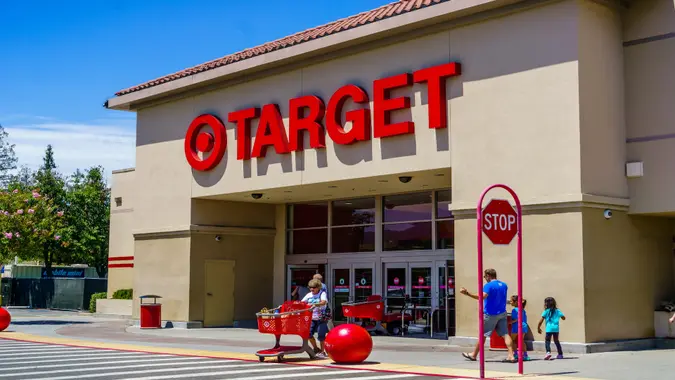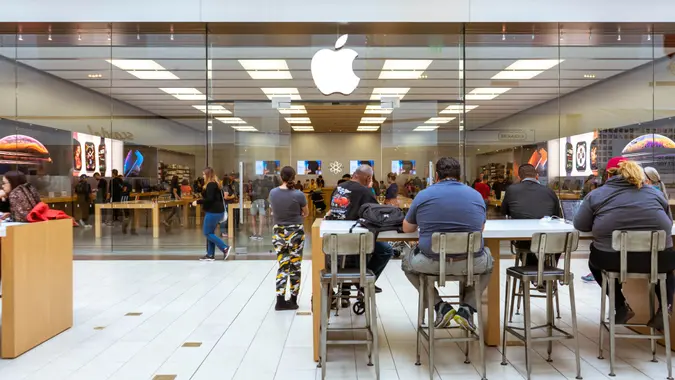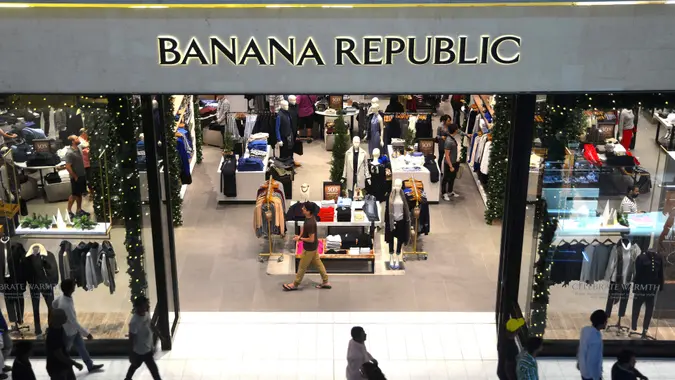Grocery Items That Have Become More Expensive Due to Inflation

Commitment to Our Readers
GOBankingRates' editorial team is committed to bringing you unbiased reviews and information. We use data-driven methodologies to evaluate financial products and services - our reviews and ratings are not influenced by advertisers. You can read more about our editorial guidelines and our products and services review methodology.

20 Years
Helping You Live Richer

Reviewed
by Experts

Trusted by
Millions of Readers
Despite recent efforts to curb inflation, grocery prices in 2024 continue to strain household budgets. Various economic factors have contributed to the persistent rise in food costs, making it challenging for consumers to keep up with their grocery expenses. Here, we explore the reasons behind the ongoing price increases and highlight the grocery items that are becoming more expensive this year.
Persistent Inflation and Its Impact
Inflation, measured by the Consumer Price Index (CPI), remains a critical issue in 2024. Although inflation peaked at 9.1% in June 2022 and has since fallen, it still exceeds the Federal Reserve’s target rate of 2%. Recent CPI data indicates year-over-year price increases of 3.5% and month-to-month increases of 0.4% as of April 2024. These figures suggest that inflationary pressures are not yet fully under control, affecting various sectors, including groceries.
Key Factors Driving Grocery Price Increases
Several factors contribute to the ongoing rise in grocery prices:
- Supply Chain Disruptions: The COVID-19 pandemic caused significant disruptions in the global supply chain, leading to shortages and delays. While some of these issues have been resolved, others persist, particularly in the food industry, driving up costs.
- Rising Production Costs: The cost of producing food items has increased due to higher prices for raw materials, transportation, and energy. For example, the U.S. Department of Agriculture (USDA) estimates that food production costs will rise by 3.8% in 2024.
- Labor Costs: Labor shortages and increased wages have also contributed to higher food prices. The U.S. Bureau of Labor Statistics reports that labor costs are rising faster than inflation, affecting the entire supply chain from farm to table.
- Geopolitical Factors: The war in Ukraine continues to impact global food supplies, particularly for wheat and corn. Ukraine’s reduced exports have put additional pressure on global markets, contributing to higher prices.
Price Increases for Specific Grocery Items
While grocery prices overall have risen by approximately 25% since the start of the pandemic, certain items have seen even more significant increases. Here are some of the grocery items that have become notably more expensive in 2024:
- Eggs: The price of eggs has increased by 50% since March 2020, making them one of the most significantly impacted items. Supply chain issues and increased production costs are primary contributors to this surge.
- Beef Products: Beef prices have seen substantial hikes, with beef roasts up by 11.2%, steaks by 7.2%, and ground beef by 6.2% year-over-year. These increases are driven by higher feed costs and labor expenses in the meat processing industry.
- Flour and Sugar: The prices of flour and sugar have each risen by over one-third since the beginning of the pandemic. These staple ingredients have been affected by increased production and transportation costs.
- Carbonated Beverages: The cost of carbonated beverages has jumped by 32.1% since March 2020, reflecting higher costs for ingredients, packaging, and distribution.
- Canned Fruits and Vegetables: Prices for canned produce have increased by 31.6%, driven by higher costs for raw materials and processing.
Regional Variations in Grocery Spending
The impact of rising grocery prices varies across the United States, with some states experiencing more significant pressures than others. Households in states like Mississippi and Hawaii allocate a larger portion of their total spending to groceries, making them more vulnerable to price increases. According to the U.S. Bureau of Economic Analysis, groceries account for 9.8% of spending in Mississippi and 9.7% in Hawaii, compared to the national average of 8%.
Conclusion
The persistent rise in grocery prices in 2024 underscores the ongoing challenges faced by consumers. While inflation has moderated since its peak in 2022, various factors continue to drive up the cost of essential food items. As households grapple with these increases, it remains crucial to stay informed about economic
Editor's note: This article was produced via automated technology and then fine-tuned and verified for accuracy by a member of GOBankingRates' editorial team.
 Written by
Written by  Edited by
Edited by 

























